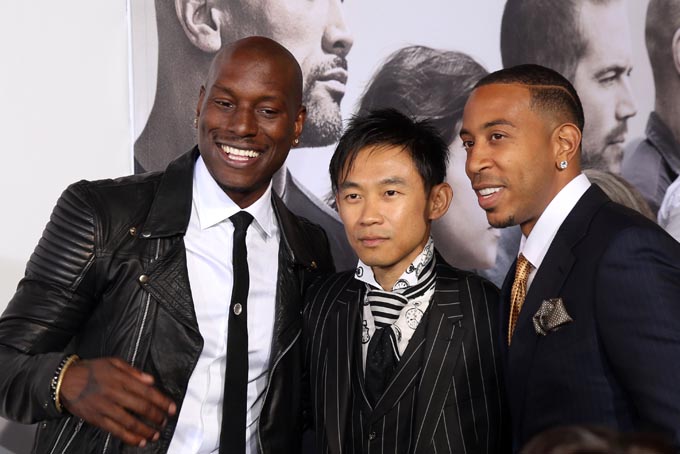
LOS ANGELES (AP) — The “Fast & Furious” series is often cited as an example of how diversity can work in Hollywood. With its multicultural casts and international settings, the franchise has generated more than $2.4 billion in global earnings. The latest installment, “Furious 7,” set box-office records last weekend with its $147-million domestic opening.
“Usually, big studio tent-pole films are all very whitewashed,” says “Furious 7” director James Wan. “People need to learn from this because this is the way of the future.”
Wan says the “Furious” films play well globally “because they have people from that part of the world in the movies and they’re not treated like second-class citizens.”
The dearth of diversity in Hollywood was heavy on the entertainment industry’s mind during awards season, when the #OscarSoWhite hashtag went viral and host Neil Patrick Harris joked about honoring the “best and whitest — sorry — brightest” at the Academy Awards.
Yet despite the success of films like “Furious 7” and increased awareness of the industry’s white, male status quo, change won’t be seen onscreen anytime soon.
A survey by The Associated Press shows that of about 170 films scheduled for release through the end of the year, 32 feature actors of color in prominent roles.
True, this year’s movies were made before the Oscar outcry. But whether onscreen diversity improves over time as production catches up to new awareness remains to be seen. One thing’s for certain, though: Much work lies ahead.
Studies by researchers at UCLA and USC show vast underrepresentation of women and minorities in every aspect of filmmaking.
“Recognizing a problem and changing it are two very different beasts,” said Cathy Schulman, the Oscar-winning producer of “Crash” and president of Women in Film.
In insular, high-risk, high-profit Hollywood, change has to be insistent and intentional, said Darnell Hunt, director of the Ralph J. Bunche Center for African American Studies at UCLA.
“It’s not going to correct itself naturally,” said the sociology professor, co-author of UCLA’s annual report on minority representation in the industry. “I suspect we’ll have more and more dysfunction and lack of alignment of people in the industry holding onto an approach they’ve had for generations and ignoring where America is.”
His team’s ongoing study of the entertainment industry aims to quantify the relationship between diversity and profitability. Their second annual Hollywood diversity report, released in February, shows that while women and minorities are underrepresented across entertainment relative to the U.S. population, movies and TV shows with diverse casts tend to perform well in ratings and at the box office.
“There’s a myth of people of color not being viable internationally when the rest of the world is diverse,” Hunt said.
Film and TV studio heads — found by the UCLA study to be overwhelmingly white and male — usually hire people they’ve worked with before, which reproduces the dismal ethnic and gender ratios. A recent study by USC and the advocacy group Women in Film shows women have represented fewer than 5 percent of directors of top films during the past two decades.
People of color have made incremental progress recently in some areas of the entertainment business, the UCLA study found. Lead roles for non-white actors in film and TV increased by about 1½ percent in 2013 over the previous year. But even with the success of minority-led TV series such as “The Mindy Project,” ”Scandal” and “How to Get Away With Murder,” non-white show-runners account for less than 6 percent of all broadcast scripted fare, the study found.
An AP analysis of Fall 2014 prime-time network programming found that three of the four networks were whiter than the U.S. population and that three of the four also had a higher percentage of blacks in leading or supporting roles — but that other minorities lagged far behind.
Industry leaders are receptive to discussions about increasing diversity, Hunt and Schulman each said. They’ve separately met with studio heads to talk about the disparity and how to fix it.
“Hollywood is not this monolithic beast,” Hunt said. “There are people in Hollywood who are very committed to diversity, who recognize its good business sense or have a social responsibility to make sure the public has their stories accurately reflected in the media.”
But change is slow and profit is king.
“Let’s put it this way: Money talks,” Wan said. “Hollywood is all about money. If having diversity equals box-office receipts around the world, they’ll listen to it. That’s the bottom line.”
___
AP Film Writer Lindsey Bahr contributed to this report.
___
Follow AP Entertainment Writer Sandy Cohen at www.twitter.com/APSandy .